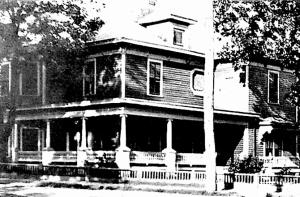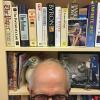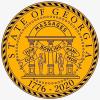The Tangible Past in Athens, Georgia Defies Description
Pub Notes
Though it may seem unseemly to write yet again about a book that includes my name on the cover, I really had very little to do with it. In addition, you probably don’t need any more encouragement and perhaps already have your own copy. So, this is not a sales pitch. I’m told that The Tangible Past in Athens, Georgia has been “flying off the shelves,” of local bookstores, so it looks like a sellout before long, anyway.
I’m writing again about this big book because it has so much in it that it is impossible to describe in one short column, even two; indeed, the book contains as many pages as this column has words. This will be another inadequate effort; to get the full effect, you just have to buy one for yourself or go in with a couple of friends and get one to share, though you may end up fighting over who gets to keep it.
OK, here are just a few more highlights.
You may have heard rumors that Thomas Street, at the east end of downtown, was once lined with mansions. Well, the editor of this book, Charlotte Thomas Marshall, had heard those rumors, too, and she started poking around. (As her earlier Oconee Hill Cemetery of Athens, Georgia, Volume 1 attests, she knows how to find where the bodies are buried.) Charlotte has not only recreated Thomas Street in all the glory of its houses and families, she has also turned west and done the same for Pulaski Street. So, this book gives you a fine grasp of downtown when it was a grand residential district rich in architectural treasures, many of them shown in photographs.
Hubert McAlexander unravels confusion concerning the early houses along Oconee Street as it climbs up from the river. Then he goes to the other side of downtown and details the growth spurt that resulted from additional university-owned lots being released for sale, opening up the hill now traversed by Dearing and other streets running up to Milledge.

The home of Monroe Bowers Morton, the prominent Athenian who built the Morton Theatre, faced Prince Avenue at its intersection with Milledge, where Flowerland is now—an African American family on one of Athens’ most exclusive streets in the Jim Crow era. (Courtesy of Charles Thomas Morton, Jr.)
What started as a photo essay on the lost houses of Prince Avenue burgeoned into a 97-page history of the street, its buildings and its people, with the original idea encapsulated in four pages of 1946 aerial photographs showing Prince from Pulaski to Oglethorpe, tantalizing rooftop views of all those houses, most of which are now vanished.
An essay of Patricia Cooper’s is included, about a family of builders and carpenters who came here from Vermont around 1820 and “astonished the natives with the rapidity of their work.”
The Church-Waddel-Brumby House, our welcome center and oldest house, is an example of their work.
Then we have several chapters about documenting houses, moving them and salvaging pieces of them. We have first-person accounts from people who tell us about Athens in the early days. We learn how the “Pink Lady,” the T. R. R. Cobb House, left Athens and how it returned. We are told about 25 houses and the different members of the Cobb family who owned them, narrated by Milton Leathers, a descendent.
You simply will not believe how many large structures in Athens have been moved from one place to another. Gary Doster includes here “an annotated compendium” of houses, monuments, public buildings and churches that have been picked up and moved.
And so it goes in the 635 pages of The Tangible Past in Athens, Georgia. Like the blind men grasping the elephant, I have failed again to give you an overall sense of the magnitude of this beast of a book. It was produced by people who can’t stop talking about Athens, with all its characters: their homes, families, achievements, creations, failures and triumphs, their university, their state, their nation, their world. It is too much to describe, but no matter. The book speaks for itself.
Keywords
More by Pete McCommons
-
Voting Absentee: Necessary But Not Easy
Pub Notes
-

Be Ready When National TV Comes Calling
Pub Notes
-










comments